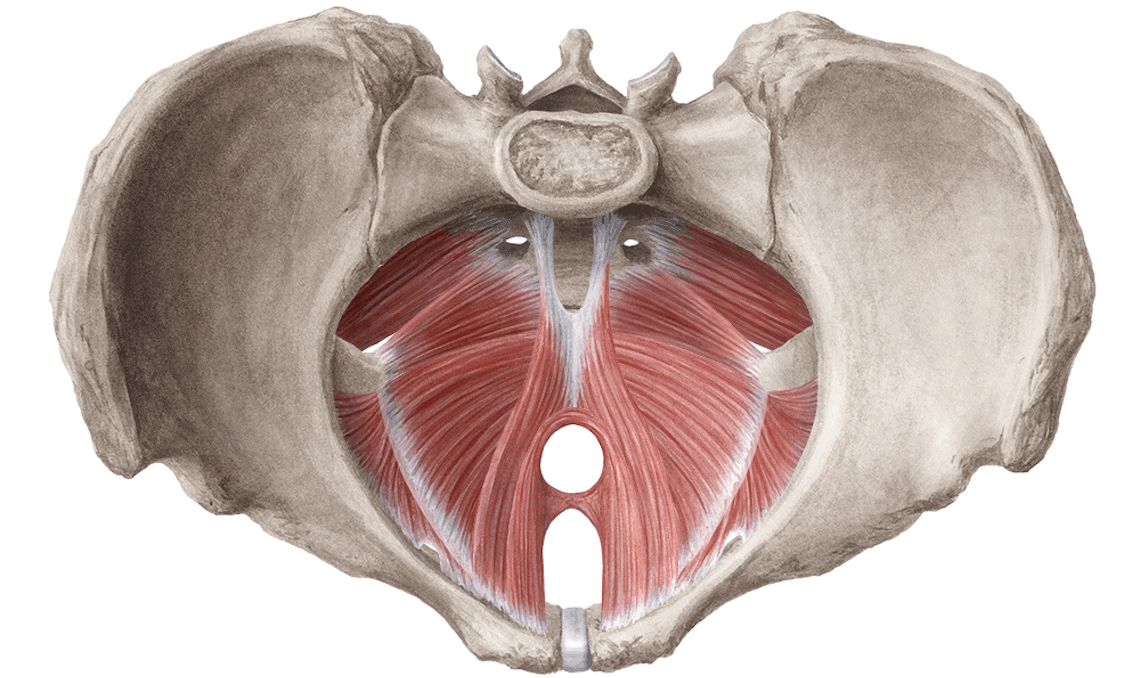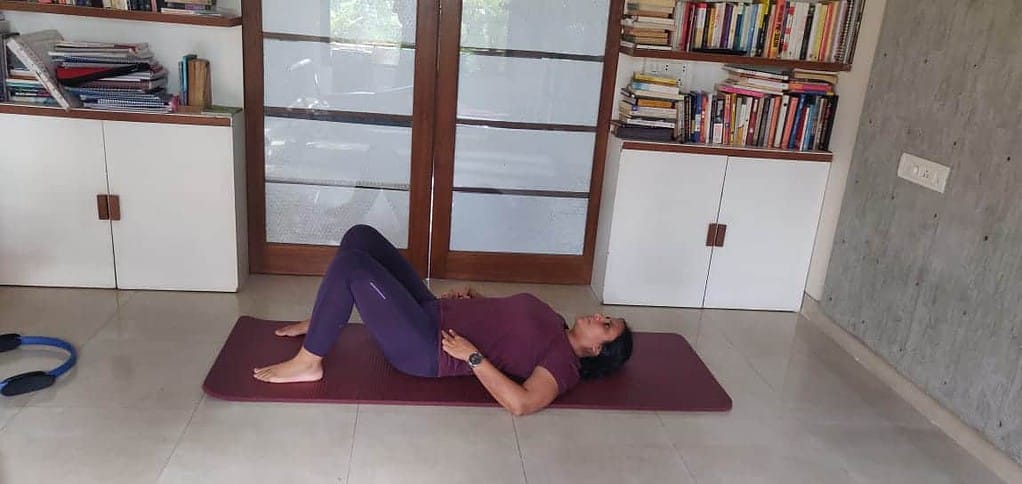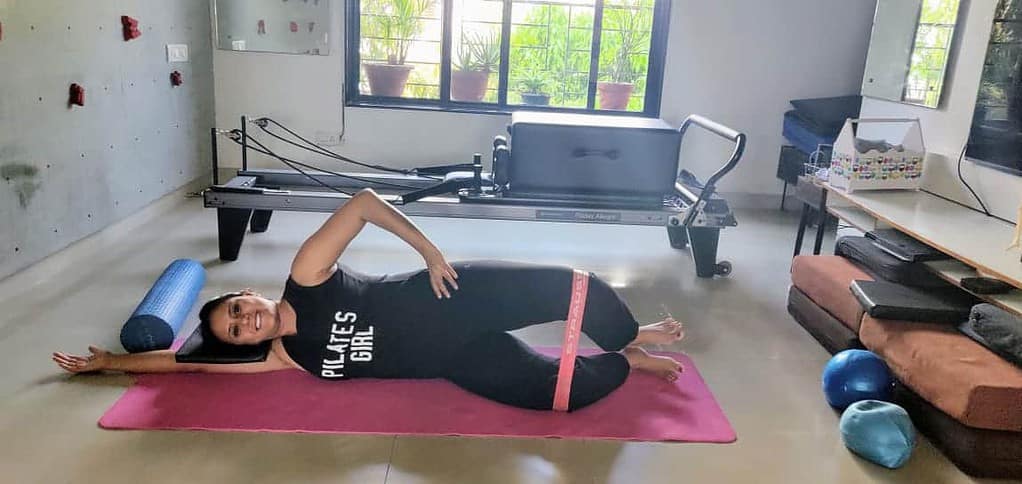The Inner Core Muscles: Pelvic Floor

For the last one in our series of four blogs on the Core, we talk about the base or the foundation of the Core muscles i.e. the Pelvic Floor.
The pelvis marks an important point between the abdomen and the lower limbs. Not only is it important for walking, but it also houses organs of the reproductive, digestive, and excretory systems, and acts as a conduit for arteries, veins, lymphatic vessels, and nerves necessary for daily functioning. The lower part of the pelvis is sealed off by a muscular diaphragm known as the pelvic floor. At the moment, the pelvic floor is trending in the health and fitness industry but most people have little idea of what it actually does. A number of muscles form the wall of the pelvic cavity and the deepest layer of these muscles is known as the pelvic floor, which is the foundation of the core, the base of the cylinder that is the Core. Let’s look at the importance of this group of muscles and learn how to strengthen them.
The Core
As you would recall from our previous blogs on the transversus abdominis, the multifidi, and the diaphragm, the Core is the powerhouse of our body. It comprises the diaphragm on the top, the pelvic floor on the bottom, the transversus abdominis in the front, and the multifidi and deep spinal muscles at the back. These are connected through the thoracolumbar fascia (a three-layered connective tissue sheet present from the mid to lower back) which pulls the reign of the spine.
The Pelvic Floor
The pelvic floor is actually a sheet of multiple muscles that sits on the base of your pelvis like a hammock or a funnel. It is sometimes called the pelvic diaphragm because of the similar movement to the Diaphragm while breathing.
Anatomy
The pelvic floor is comprised of the coccygeus muscle and the levator ani, which is further subdivided into pubococcygeus, puborectalis, and iliococcygeus muscles.
Forming a sort of sling from the pubic bone (pubis symphysis) in the front to the tail bone (coccyx) in the back, and another sling across from one sit bone (ischial tuberosity) to another sideways, the pelvic floor forms a plus sign + at the bottom of the torso.
On top of your pelvic floor sits your bladder at the front, your uterus (for women), then your rectum at the back. These are referred to collectively as the pelvic organs.
The pelvic floor has two openings in males and three openings in females that allow for the passage of outlets from the visceral organs. The openings and closing of these outlets are controlled by the action of the pelvic floor muscles.
Function
The muscles of the pelvic floor are primarily supportive structures. They help keep the pelvic organs in place, against gravity and prevent them from being pushed through the pelvis during any strain. It achieves this task by being in a state of contraction throughout and this is increased when intraabdominal pressure increases while sneezing, coughing, lifting a heavy object, vomiting, or forced exhalation. This makes it an important part of the core muscles, as they are all primarily stabilisers.
The pelvic floor also aids in maintaining both urinary and faecal continence. In simple terms, it helps you hold your pee and poo in until you are on a toilet. In order for urine and faeces to pass through the urethra and the rectum respectively, the pelvic floor needs to be relaxed.
These muscles also provide additional support during pregnancy by becoming slack to accommodate the foetus during the last trimester and by aiding in childbirth during delivery. Apart from this, strong pelvic floor muscles can increase sexual arousal and improve the chances of reaching an orgasm.
How to identify and feel the pelvic floor muscles in action
One of the simplest cues for this is to visualise the cross sign + between your pubic bone and tail bone, and both your sit bones, and imagine you are lifting the cross up by drawing the bones in towards each other. Another cue is to imagine the centre of the cross riding up like an elevator in its shaft.
Awareness of its movement is important for a strong pelvic floor. While trying to activate these muscles, many people clench their buttocks together and that is not effective at all. The movement of the pelvic floor is really small and isolating that takes practice, so don’t lose hope if you don’t get it in a few goes.
Dysfunction
Just like any other muscle in the body, the pelvic floor can be “on” or “off”, tight or stretched, weak or strong. Usually, when we inhale, the diaphragm contracts and presses down and when we exhale it relaxes and rides up. The pelvic floor mirrors the movement of the diaphragm. If we feel an opposite movement happening while we inhale and exhale, or no movement at all, then it is a sign of dysfunction.
A weak pelvic floor is often characterised by incontinence or leaking of urine or faeces when you make a sudden movement, cough or sneeze, etc. This might happen if you cannot turn on the muscle at all.
Opposed to popular belief, a weak muscle is not always loose. A tight and overworked pelvic floor is also weak. And this type of weakness due to overuse happens very frequently with people who hold their urine in for long hours or even those who lift extremely heavy weights.
Additionally, the pelvic floor can also lose tone due to constant intra-abdominal pressure for example in constipation.
Many experts have noticed that those who clench their pelvic floor, also have a tendency to clench their jaws. This can be a good indicator for instructors to identify such individuals and help them out. Dysfunction of the pelvic floor might also be identified by low back pain and tightness in the hip joint as the sacral spine and the muscles of the hip joint are inextricably linked to the pelvic floor. These dysfunctions can be caused by an injury in the muscle due to an accident, sexual trauma, or childbirth. Sometimes even an abdominal surgery or spinal cord injury can affect the pelvic floor.
This is a myth that only women have pelvic floor issues. Men can also suffer from pelvic floor dysfunction which can manifest as low back pain, hip tightness, and in extreme cases, prostate problems.
Activating the Pelvic Floor
As we said before, the key to a strong and healthy pelvic floor is awareness. The first step to strengthening it is to tap into internal awareness and feedback from your body. Just the simple instruction to squeeze the pelvic floor leads to incorrect activation.
We have to remember that no exercise can directly activate your pelvic floor or any core muscle. It is only with mindfulness and by concentrating on that muscle while performing an exercise that you can tap into it. Here are some Pilates exercises which will help you, relax and contract your pelvic floor. Make sure to breathe into every movement and focus on the cross between your legs.
Think of the cueing of lifting the cross up while you move in different positions.
Pelvic Tilt:
Visualise the pelvic floor and think of the lift, can you maintain this lift as you do pelvic tilt?

Bridge with ball:
Can you maintain this tilt and take it to a bridge, without losing the connect of the pelvic floor?

Clam:
This exercise facilitates and aids the pelvic floor muscles, as they are connected in close proximity to deep hip rotators.

While keeping the pelvic floor connect, challenge yourself in higher functional exercises like squats and lunges. Lastly, add load to your exercises and continue consciously connecting to the core.
A building is only as strong as its foundation, and thus for your core to be strong you cannot ignore the pelvic floor. Understanding the muscles of the core, individually, and then as a unit, will help you with awareness and give you much better results from your workouts.
All core muscles, when switched off, need to be consciously and voluntarily engaged and with progression in your strength, you should be able to take this conscious control to unconscious control in higher-level activities.
If you can’t, come and join a class at Moushu’s Pilates and build your core strength.

Comments
So well explained . Clear, concise and easy to understand!!!!
Thank you so much!